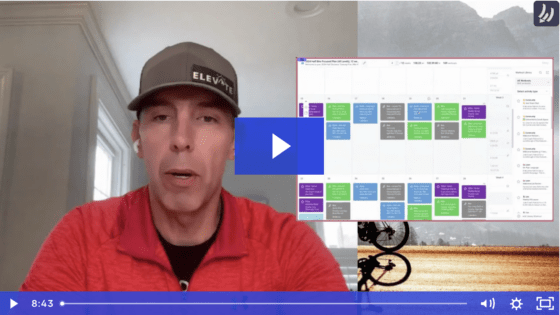In Part I of this series, we introduced you to the Four Keys of Triathlon Training and to our first key, #workWORKS. Today we continue the discussion and give you:
Key #2: Return on Investment (ROI)
You are an age group triathlete with limited time, money, headspace, and Spousal Approval Units (SAUs) to invest in your sport.
We encourage you to ask yourself
What is my return on race day for every input spent?
Then,
- Understand that the costs of time, money, headspace, and SAU inputs are variable across the season. That is, a 4hr ride in February vs a 4hr ride in July for a race in September are fundamentally different, on many levels, and therefore have different ROI implications.
- Find opportunities to achieve the same or better results with fewer and/or smarter resources invested.
- Specificity, always. The most time efficient way to get better at a thing is to do that thing.
These are decision-making criteria you make every day in other areas of your life, as you assess how to achieve maximum results with your limited resources. In our opinion, the investments you make with regards to your triathlon training should be subjected to the same audit.
That said, we understand that lifestyle enjoyment doesn’t fit neatly into this ROI assessment — you swim, bike, and run because you like to swim, bike, and run and sometimes doing more of that is mo’ betta because you get to do more of what you like to do. We get that.
But at some level of time investment in the sport, training volume becomes as much about expressing a lifestyle as it is about achieving better results on race day. That is, you train long hours because you dig it and that “dig it” provides value beyond the returns you may or may not see on race day.
As a few examples how how we apply this perspective to our athletes, our focus on Return on Investment expresses itself in three forms:
- Keep training volume as low as we can for as long as we can: we understand that our athletes have a relatively fixed amount of training time available each week. And so we work to maximize the amount of smart work they get done within the amount of training time that life gives them, week after week.
- Targeted Swim Investment: we recognize that the swimming ROI equation can be very different for different people, along a spectrum of swimming ability, local access to quality swimming resources, and more. And so we teach our athletes how to (1) properly assess their opportunities and (2) how to properly schedule their swim investment across their season in order to maximize their ROI.
- Objective Metrics of Power and Pace: remember our first key of #WorkWORKS. Power on the bike and pace on the run are objective metrics of work performed, the very thing we are trying to improve. Therefore training and racing with power and pace offers a very high ROI opportunity, certainly higher than more common time and money investments athletes often make in the sport. And so we encourage our athletes to invest in these tools (if they are able to) and teach them how to use them.
- Volume Pops: in our experience, training volume is more valuable on race day when it’s applied closer to your race, and in relatively large doses. That is, an epic training week or weekend 3-4 weeks out from your race will be more valuable on race day vs nickel and diming life for 30-60′ here and there month after month. And so we work with our athletes to schedule strategic high volume opportunities, if this is a strategy that their life can accommodate.
Thanks for reading, we’ll be back soon with Key #3: The Box





Leave a Reply